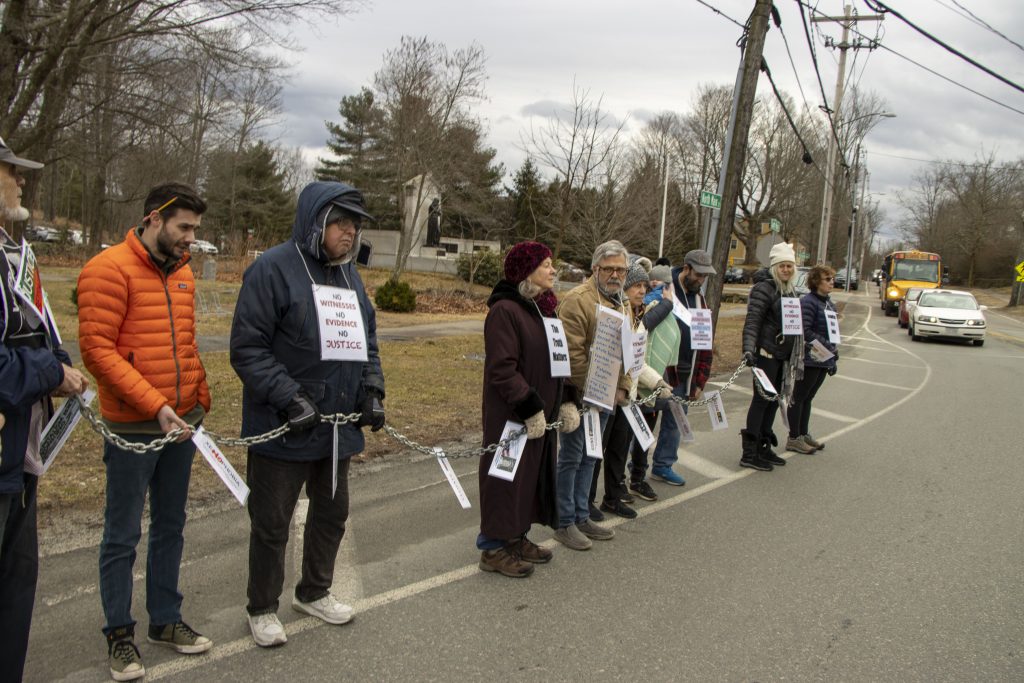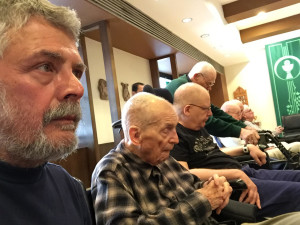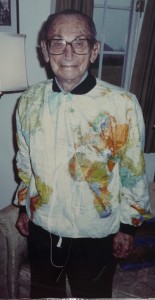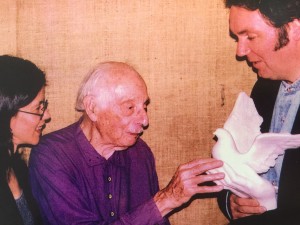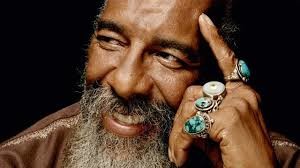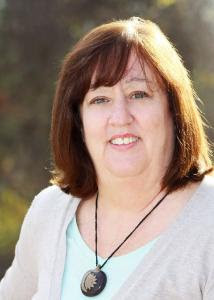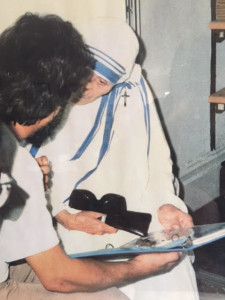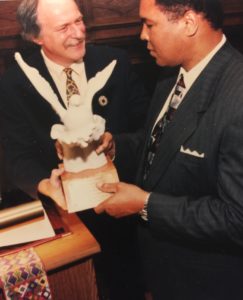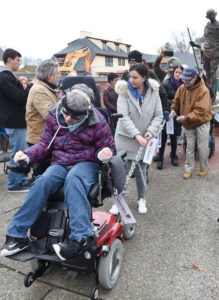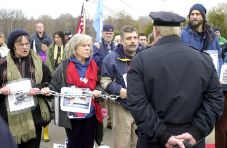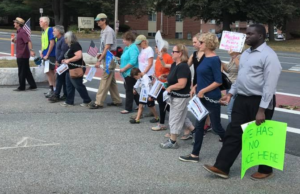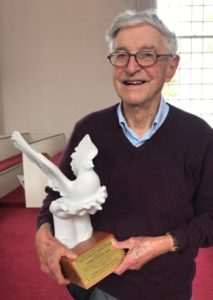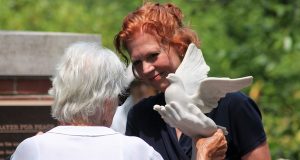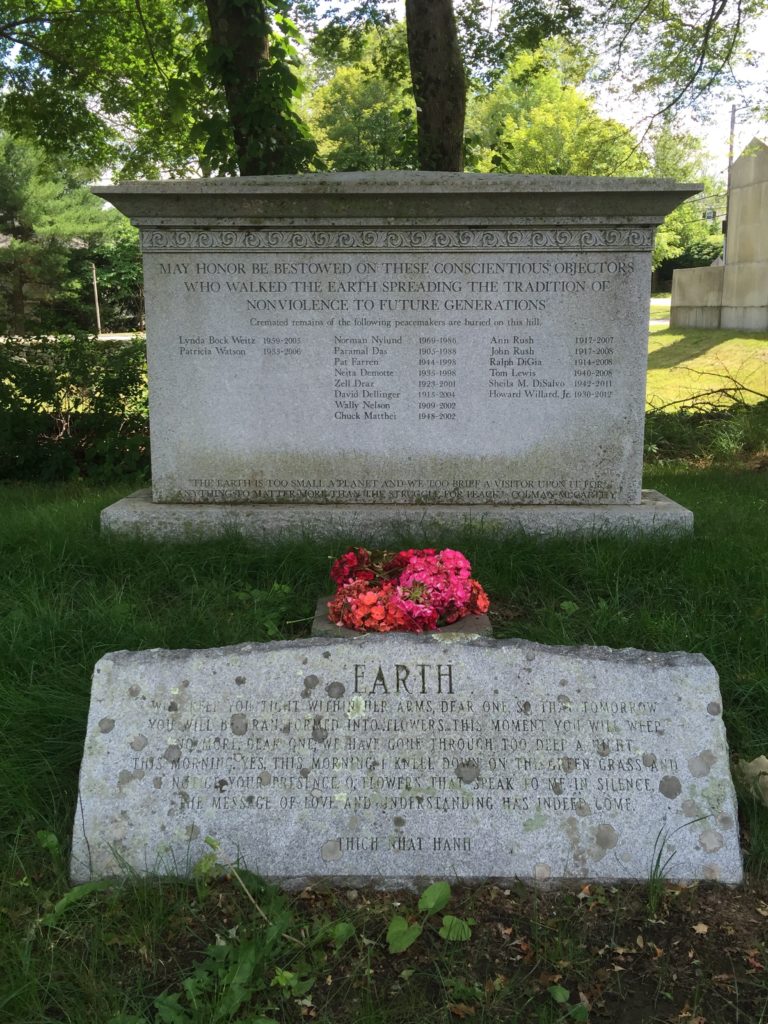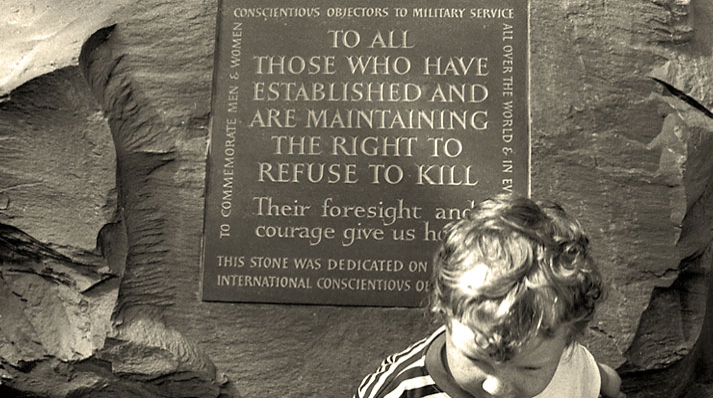Memorial for Conscientious Objectors
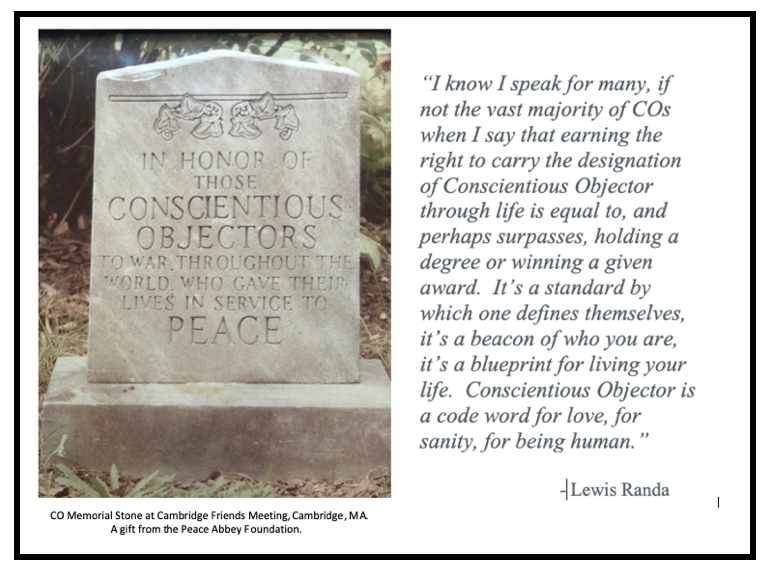
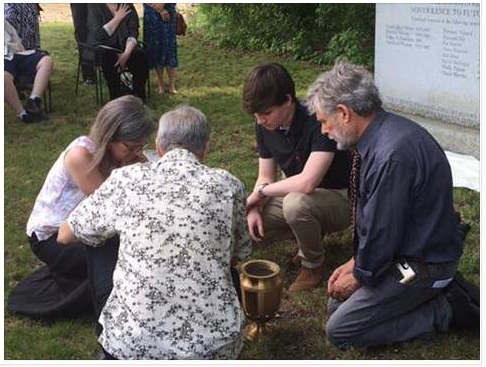 We at the Peace Abbey embrace the belief that pacifism is the hallmark of our evolution; nurtured through the guidance & moral authority of love, compassion & forgiveness. The burial of the cremation remains of someone who embraced nonviolence as a way of life is viewed as a sacred duty of conscience, a prayer for peace, a public statement of the power of reconciliation, kindness & love to which the deceased aspired.
We at the Peace Abbey embrace the belief that pacifism is the hallmark of our evolution; nurtured through the guidance & moral authority of love, compassion & forgiveness. The burial of the cremation remains of someone who embraced nonviolence as a way of life is viewed as a sacred duty of conscience, a prayer for peace, a public statement of the power of reconciliation, kindness & love to which the deceased aspired.
This requiem service begins with the unveiling of the Memorial for Conscientious Objectors, followed by the reading of quotations & engraved names on the stone with a brief statement about each activist whose ashes are interred on the grounds. In the tradition of Quaker Meetings, we then share a period of silence, recalling in our hearts the life of the person whose cremation remains will be removed from the ceremonial urn to be scattered at the Memorial or buried.
In keeping with the Peace Abbey mission, the Peace Seeds interfaith prayers for peace are recited in unison, which concludes the service. All present are encouraged to read the bronze plaques on the walls and stones surrounding the statues of Mahatma Gandhi and Emily the Cow for inspiration. May we carry on the tradition of non-violence in memory of those whose final resting place is here, on the sacred grounds of the Pacifist Memorial. This humble memorial in the center of Sherborn is our nation’s cremation cemetery for those who resisted participation in armed conflict & war; serving the cause of peace & justice through nonviolence.
Actor and conscientious objector, Vince Trankina from California visits Peace Abbey Memorial Park to have his name engraved on the CO stone where his cremation remains someday will be buried.
RELOCATED FROM HILL TO THE CENTER OF THE PACIFIST MEMORIAL
The cremation remains of pacifists buried on C.O. Hill have been relocated to the center of the Pacifist Memorial. VIDEO
The Life Experience School was founded on the principles of nonviolence and its establishment was the alternative service of the Founder, Lewis Randa, following his discharge from the military as a conscientious objector in 1971. C.O. Cemetery is where the founding mother of The Life Experience School, Neita DeMotte and late student Norman Nylund are buried. They were shining lights for The Life Experience School and the Peace Abbey during their lives and continue to inspire us to this day.
With the placement of the memorial stone honoring those who refused to take up arms, The Peace Abbey Foundation is extending this sacred space to others who consider themselves, or who are considered by their families, to be conscientious objectors.
Although the term conscientious objector has traditionally been related to men who were conscripted and refused to serve in the military, we have expanded this designation to include those who have renounced the violence of war and embraced the path of activist peacemaking. The stone includes the names of these conscientious objectors and stands as a living monument to the lives of these individuals who worked to create a more peaceful world.
The granite Memorial Stone for Conscientious Objectors has now been placed in the center of the Pacifist Memorial. At the top of the stone reads the words:
MAY HONOR BE BESTOWED ON THESE CONSCIENTIOUS OBJECTORS WHO WALKED THE EARTH SPREADING THE TRADITION OF NONVIOLENCE TO FUTURE GENERATIONS.
The names engraved on the Memorial Stone include:
Caroline Lewis
Stefan Schindler
Karl Bergstrom
Pat Farren
David Dellinger
Wally Nelson
Chuck Matthei
Lynda Bock Weitz
Paramal Das
Ralph DiGia
Ann Rush
John Rush
Patricia Watson
Zell Draz
Norman Nylund
Tom Lewis
Sheila DeSalvo
Howard Willard, Jr.
(Vince A. Trankina)
AmyNoel Wyman
This cremation cemetery is dedicated to individuals who either a) received the designation of conscientious objector from a draft board or at a military hearing, b) applied for the designation and were rejected, or c) embraced the tradition of conscientious objection as a personal commitment to their opposition to war.
CONSCIENTIOUS OBJECTOR
By Edna St. Vincent Millay
I shall die, but that is all that I shall do for Death.
I hear him leading his horse out of the stall;
I hear the clatter on the barn-floor.
He is in haste;
he has business in Cuba, business in the Balkans, many calls to make this morning.
But I will not hold the bridle while he clinches the girth.
And he may mount by himself:
I will not give him a leg up.
Though he flicks my shoulders with his whip,
I will not tell him which way the fox ran.
With his hoof on my breast,
I will not tell him where the black boy hides in the swamp.
I shall die, but that is all that I shall do for Death;
I am not on his pay-roll.
I will not tell him the whereabout of my friends nor of my enemies either.
Though he promises me much,
I will not map him the route to any man’s door.
Am I a spy in the land of the living, that I should deliver men to Death?
Brother, the password and the plans of our city are safe with me;
never through me shall you be overcome.
I shall die, but that is all that I shall do for Death.
